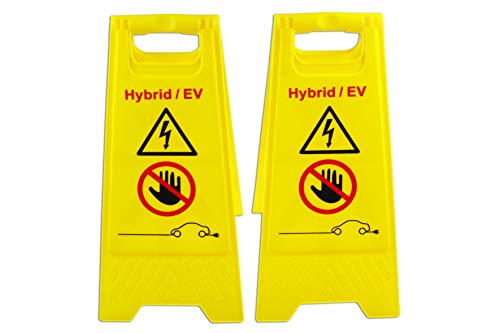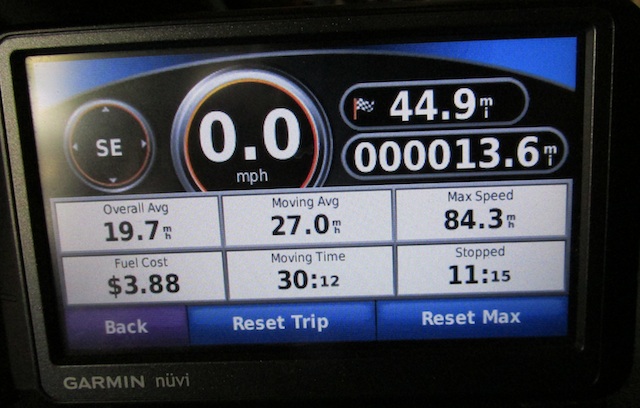It's called PLANNING AHEAD
Pilots do it meticulously (I'm not a pilot)
Ocean and Coastal Navigators do it meticulously (I spent many years cruising)
Everyone does it, sort of, even if subconsciously. It's a mindset that is now brought to the forefront.
Look yourself in the mirror: how many times have you hopped into the car and not known where you're going?
Nowadays, with GoogleMaps, GPS, and SmartPhones, it is so easy to be able to predict how many miles we're going to go.
With our excellent Range Remaining display, it's a piece of cake. Sure beats the simple voltmeter/ammeter and wildly inaccurate SOC gauges on my other EVs. A cheap GPS (they're down to $40 at Fry's) is a nice accessory for the iMiEV.
Sure, there are times when we head to the store and find out that what we need is out of stock and need to go elsewhere - but then we reassess the situation to determine if that additional mileage is acceptable before venturing out there (don't we?).
So, why don't I have Range Anxiety? Because I always know exactly how far I'm going and I pay attention to my Range Remaining and Fuel Gauge as I'm driving. I basically don't go under 3 bars or RR=10, primarily to conserve my battery. If there is any question at all, I simply slow down and use a few hypermiling tricks - the iMiEV is magically responsive to such tactics, and it's always fun to watch the RR actually increase as one is driving.
If I need to make a round trip of over 50 miles (high speed highway - it's easily 70+ miles for lower-speed driving) and can't guarantee that I can recharge or have time constraints, I simply don't do it and take the Gen1 Insight hybrid. In practice, since we bought the iMiEV, using the ICE is a very rare occurrence for our local driving. Edit 5/2020: This post had been written in 2012 when I owned an i-MiEV without CHAdeMO. Nowadays, with the proliferation of DCFC everywhere, there is virtually no constraint and i have no ICE/hybrid to turn to, but do own a Tesla that's used only for seriously-long trips.
Longer trips are actually fun from a planning standpoint: if we can't make the round trip without recharging, we check to ensure we can charge at our destination (and have more than one place as backup) and pinpoint their location and availability using PlugShare or Recargo or ChargePoint. We also check along our route to see if there are any public charging stations (and EXACTLY where they are), and as a further backup we note what friends we might have along the route - just in case...
That last case is the reason that I made sure my Level 2 EVSE is transportable (I bought an SPX Xpress which works on either 120v or 240v and has a number of current setting to tailor it to the supply). I've used it a few times when visiting friends and plugged into their dryer outlets - reality is that in each case my Mitsu 120v Level 1 EVSE would have sufficed.
Since "what's the Range" is by far the most-frequently-asked question from bystanders, I really try to use this as an opportunity to educate the person and have them think realistically about the majority of their automotive excursions in order to have them realize that the iMiEV really is suitable as a primary car - the ICE vehicle becomes secondary and reserved for longer trips.
I've now taken to answering the range question by saying "a couple of hundred miles a day" instead of "EPA says 62 miles" - the former elicits positive reactions whereas the latter results in frowns and head shaking. Simply plugging in the car at home during the day has to be explained, as for some reason many people think you have to deplete the battery before charging it (NiCd legacy?). The cellphone analogy is helpful: "Would you rather charge your cellphone once a week in five minutes in this special charging place a few miles away or would you rather charge at home any time you want?" and point out that you have a "full tank" every morning. Let me re-emphasize that: the convenience of "fueling up" at home is priceless!
The preceding rant was triggered by, once again, being asked the same question over and over again and the realization that most people have not taken the time to assess their own driving habits and just how easily a "limited range" electric vehicle such as our iMiEV can satisfy most of their driving needs. Sorry, I've repeated stuff I've said before.
Edit 7/31: added the phrase " exactly how far I'm going"
Pilots do it meticulously (I'm not a pilot)
Ocean and Coastal Navigators do it meticulously (I spent many years cruising)
Everyone does it, sort of, even if subconsciously. It's a mindset that is now brought to the forefront.
Look yourself in the mirror: how many times have you hopped into the car and not known where you're going?
Nowadays, with GoogleMaps, GPS, and SmartPhones, it is so easy to be able to predict how many miles we're going to go.
With our excellent Range Remaining display, it's a piece of cake. Sure beats the simple voltmeter/ammeter and wildly inaccurate SOC gauges on my other EVs. A cheap GPS (they're down to $40 at Fry's) is a nice accessory for the iMiEV.
Sure, there are times when we head to the store and find out that what we need is out of stock and need to go elsewhere - but then we reassess the situation to determine if that additional mileage is acceptable before venturing out there (don't we?).
So, why don't I have Range Anxiety? Because I always know exactly how far I'm going and I pay attention to my Range Remaining and Fuel Gauge as I'm driving. I basically don't go under 3 bars or RR=10, primarily to conserve my battery. If there is any question at all, I simply slow down and use a few hypermiling tricks - the iMiEV is magically responsive to such tactics, and it's always fun to watch the RR actually increase as one is driving.
If I need to make a round trip of over 50 miles (high speed highway - it's easily 70+ miles for lower-speed driving) and can't guarantee that I can recharge or have time constraints, I simply don't do it and take the Gen1 Insight hybrid. In practice, since we bought the iMiEV, using the ICE is a very rare occurrence for our local driving. Edit 5/2020: This post had been written in 2012 when I owned an i-MiEV without CHAdeMO. Nowadays, with the proliferation of DCFC everywhere, there is virtually no constraint and i have no ICE/hybrid to turn to, but do own a Tesla that's used only for seriously-long trips.
Longer trips are actually fun from a planning standpoint: if we can't make the round trip without recharging, we check to ensure we can charge at our destination (and have more than one place as backup) and pinpoint their location and availability using PlugShare or Recargo or ChargePoint. We also check along our route to see if there are any public charging stations (and EXACTLY where they are), and as a further backup we note what friends we might have along the route - just in case...
That last case is the reason that I made sure my Level 2 EVSE is transportable (I bought an SPX Xpress which works on either 120v or 240v and has a number of current setting to tailor it to the supply). I've used it a few times when visiting friends and plugged into their dryer outlets - reality is that in each case my Mitsu 120v Level 1 EVSE would have sufficed.
Since "what's the Range" is by far the most-frequently-asked question from bystanders, I really try to use this as an opportunity to educate the person and have them think realistically about the majority of their automotive excursions in order to have them realize that the iMiEV really is suitable as a primary car - the ICE vehicle becomes secondary and reserved for longer trips.
I've now taken to answering the range question by saying "a couple of hundred miles a day" instead of "EPA says 62 miles" - the former elicits positive reactions whereas the latter results in frowns and head shaking. Simply plugging in the car at home during the day has to be explained, as for some reason many people think you have to deplete the battery before charging it (NiCd legacy?). The cellphone analogy is helpful: "Would you rather charge your cellphone once a week in five minutes in this special charging place a few miles away or would you rather charge at home any time you want?" and point out that you have a "full tank" every morning. Let me re-emphasize that: the convenience of "fueling up" at home is priceless!
The preceding rant was triggered by, once again, being asked the same question over and over again and the realization that most people have not taken the time to assess their own driving habits and just how easily a "limited range" electric vehicle such as our iMiEV can satisfy most of their driving needs. Sorry, I've repeated stuff I've said before.
Edit 7/31: added the phrase " exactly how far I'm going"


































